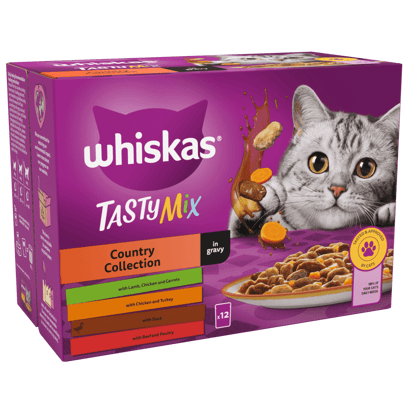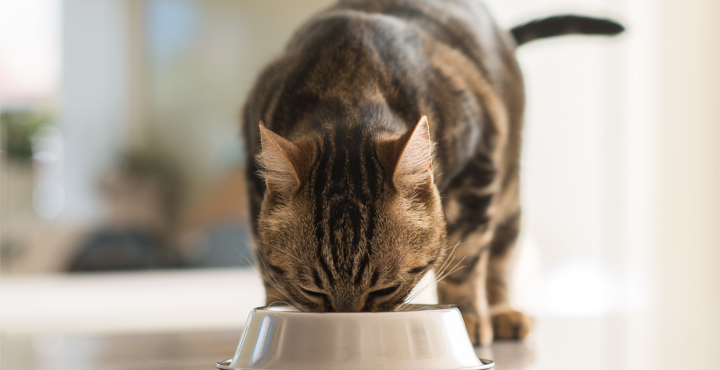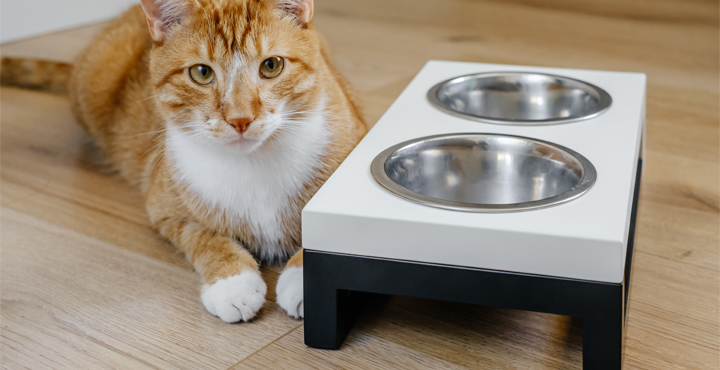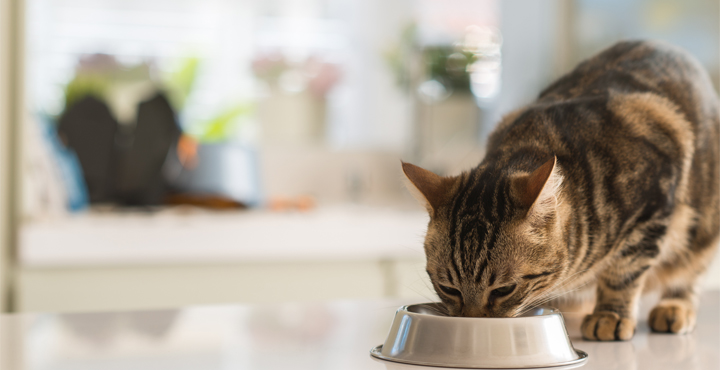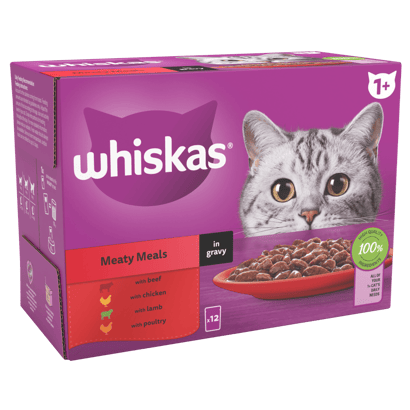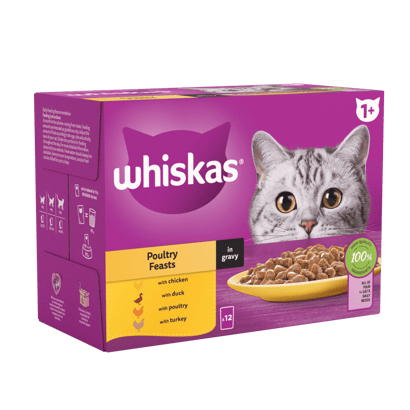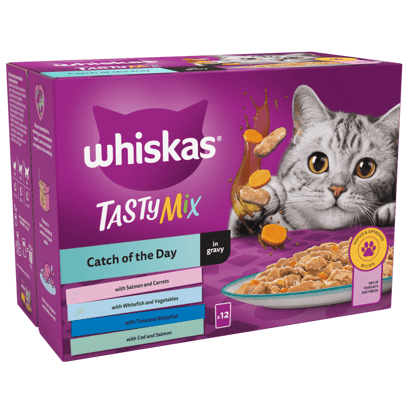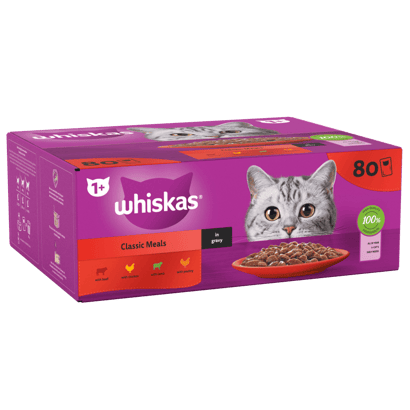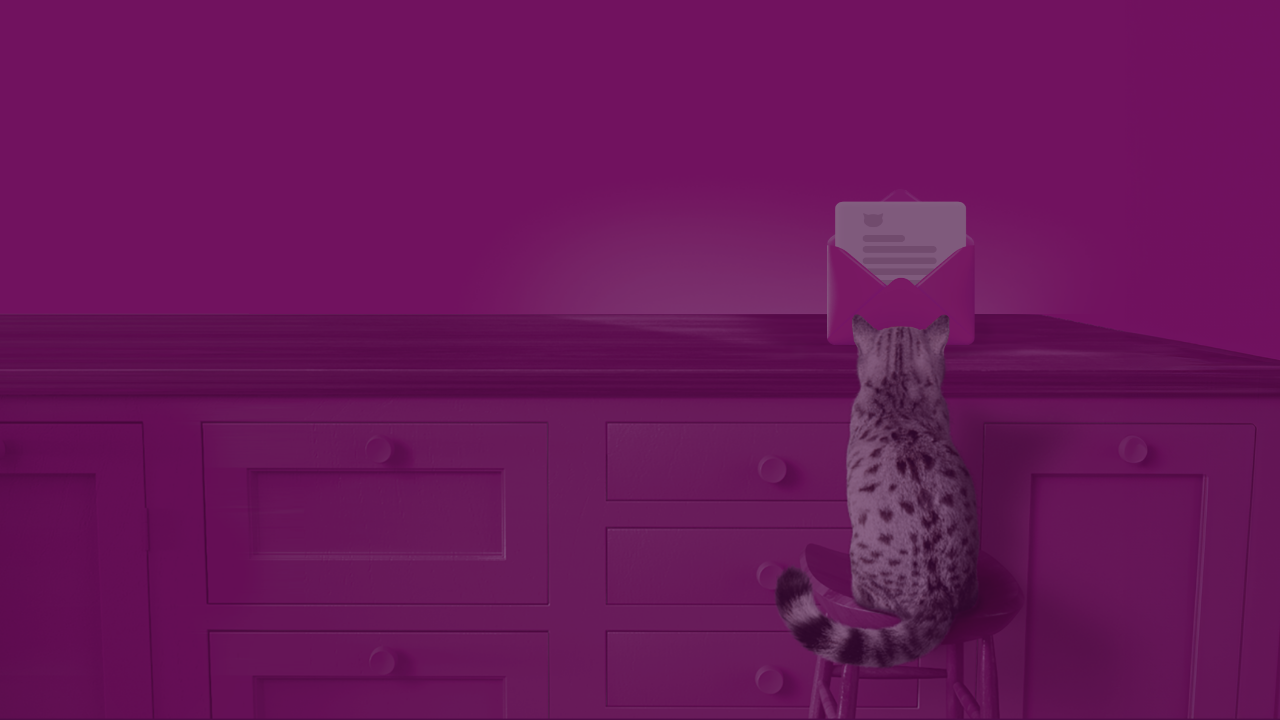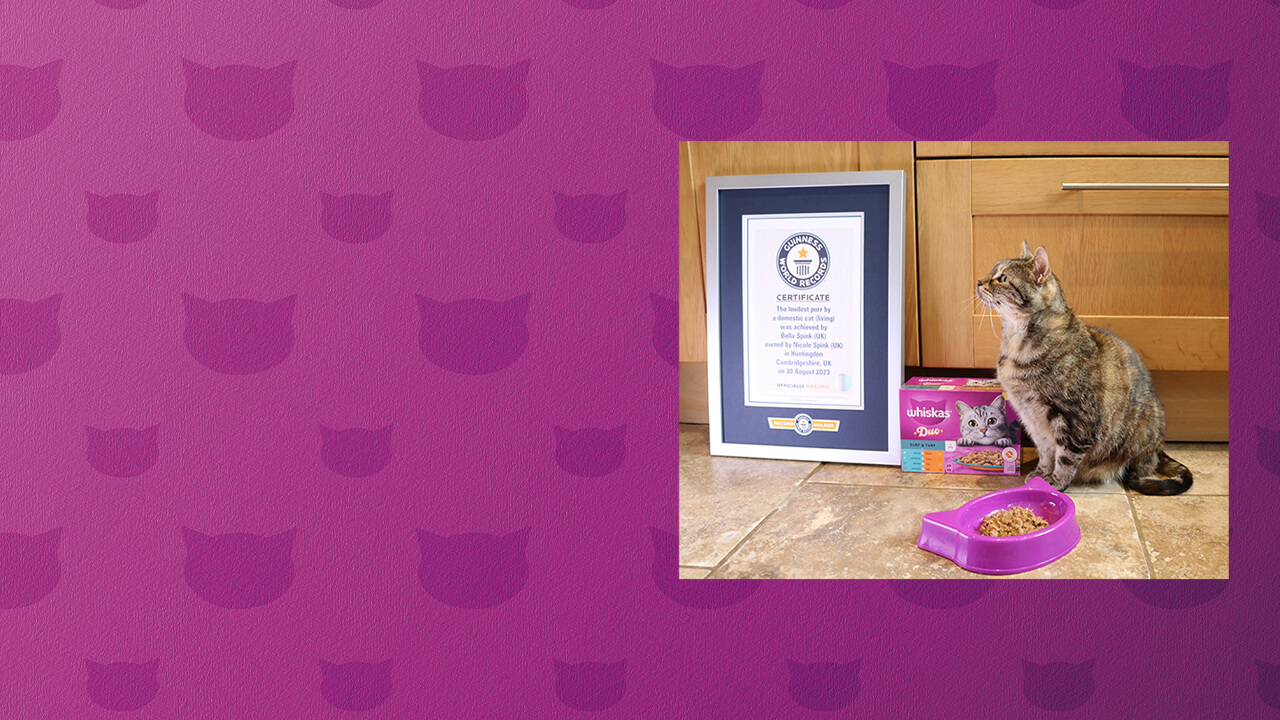

Cats are often the king or queen of the household, with their adoring owners waiting on them hand and foot ready to meet their every need. For this reason, it can be tempting to feed your cat whenever they demand to be fed, rather than sticking to a feeding schedule. However, this isn’t always healthy for your cat, and can quickly lead to weight gain. So, how many times a day should you feed a cat? Royal Canin investigates…
How often should you feed a cat?
How often you should feed your cat depends on a few factors; for example, how old they are. Cats should be fed according to their life stage, whether that’s kitten, adult, or senior. It will also depend on your schedule and when you’ll be around to feed them.
As cats have small stomachs – roughly the size of a ping-pong ball – they are best suited to eating little and often. Cats who are fed large portions may become sick after meals or put on weight over time. Therefore, a few smaller meals a day should work well for your cat instead of one large one.
If you decide on set mealtimes, make sure to stick to these times of day, as cats like routine. If you are out of the house during the day, feeding once in the morning and once in the evening will be enough, as well as leaving a bowl of dry kibble out for your cat to snack on throughout the day.
Although some cat owners choose to ‘free feed’ their cat and leave out food all day for them to graze on, this makes it hard to monitor how much your cat is eating and can lead to weight gain. This is especially true if you have more than one cat, as it is difficult to tell who is eating what. To combat this, consider feeding your cats separately as part of your feeding routine.
How much food should I feed my cat?
How much food you give your cat ultimately depends on their breed and lifestyle. For example, if you have an indoor cat, they might not need as much food as outdoor cats.
If you feed your cat wet food, one pouch per mealtime should be enough. If your cat doesn’t eat the whole pouch, you could refrigerate it and when your cat is hungry again, gently warm the food back up in the microwave.
However, if your cat repeatedly doesn’t eat all their wet food in one sitting, giving them dry food might be a better option, so they can return to the food when they want. If wet food is left out for extended periods of time it goes off and will have to be thrown away. If you only feed your cat dry food, make sure they have access to fresh drinking water, too. Most owners like to give their cats a mix of wet and dry food for variety.
Monitor your cat’s weight carefully to determine whether you are feeding them the right amount. If your cat starts to look overweight, you will need to reduce their food intake. To assess your cat’s physical condition, use your hands to carefully feel around their ribs and waist. If it isn’t easy to feel their ribcage and you can’t easily see their waist, they are likely overweight. Always ask a vet for advice on helping your cat to lose weight so you can do it carefully and safely.
Similarly, if your cat’s ribs, backbone and waist are visible, they might be underweight; you should ask a vet for advice on how to safely increase their weight.
Usually pet food packaging contains helpful guidelines on how much to give your pet. Alternatively, you can use a cat feeding guide or ask a vet for advice if you are unsure.
How often should I feed my kitten?
As kittens have a lot of growing to do, they need to eat up to four times the calories per pound of body weight as adult cats. However, as their stomach is a lot smaller than that of an adult cat, kittens need to be fed numerous small meals a day to give them the correct calorie and nutrient intake.
After kittens are weaned, at about six to eight weeks, they can start eating up to six servings of specially formulated kitten food. As your kitten gets bigger, you can gradually reduce the number of meals you give them per day until they reach adulthood, or around one year of age.
How often should I feed a senior cat?
Senior cats have different nutritional needs to younger cats and may require a special senior cat food. Older cats tend to spend more time relaxing and sleeping, so they do not need as many calories as younger, more active cats. They may need additional nutrients, though; for example, taurine. The Whiskas® Senior range contains extra taurine to help your cat’s vision and heart, as well as zinc and linoleic acid for healthy skin and coat, and phosphorus to help their bladder function normally.
With this in mind, you may find that your senior cat is happy with just one or two meals a day. However, you should always ask a vet’s advice on how best to feed them.

